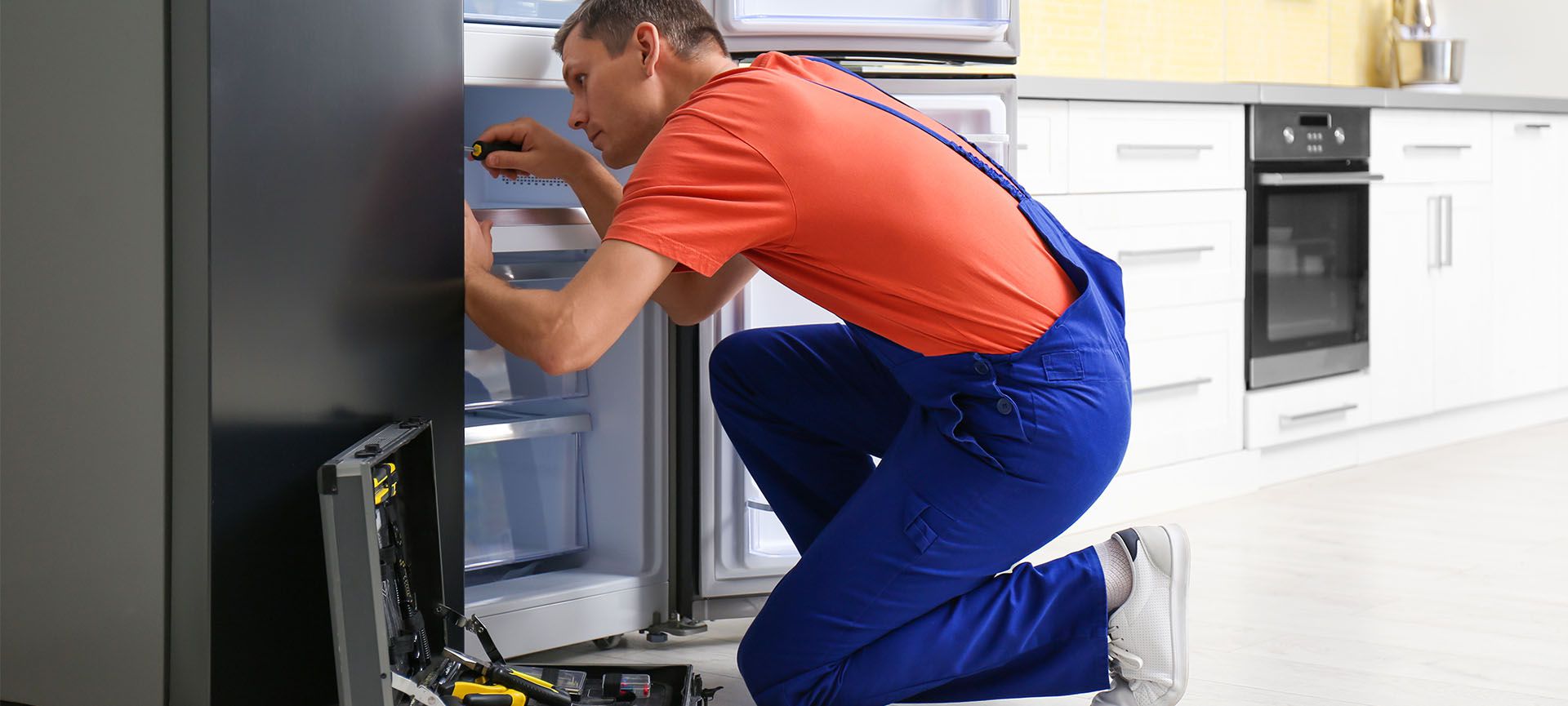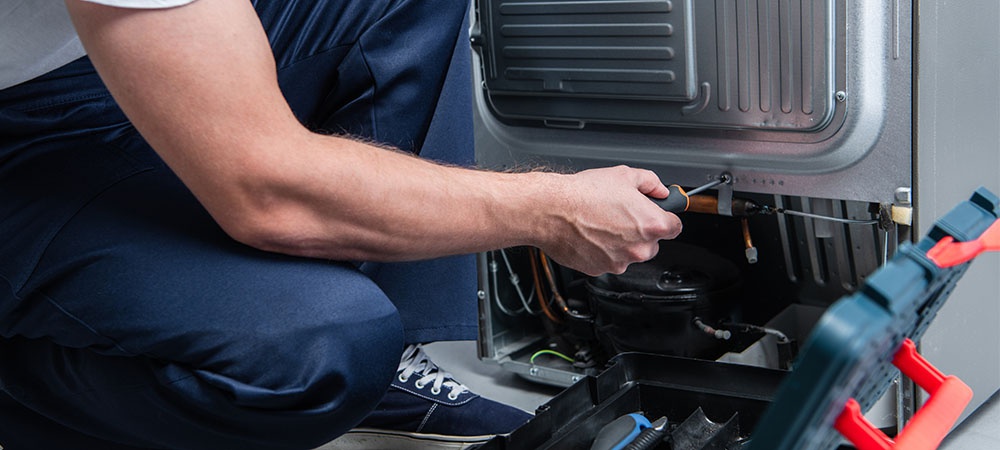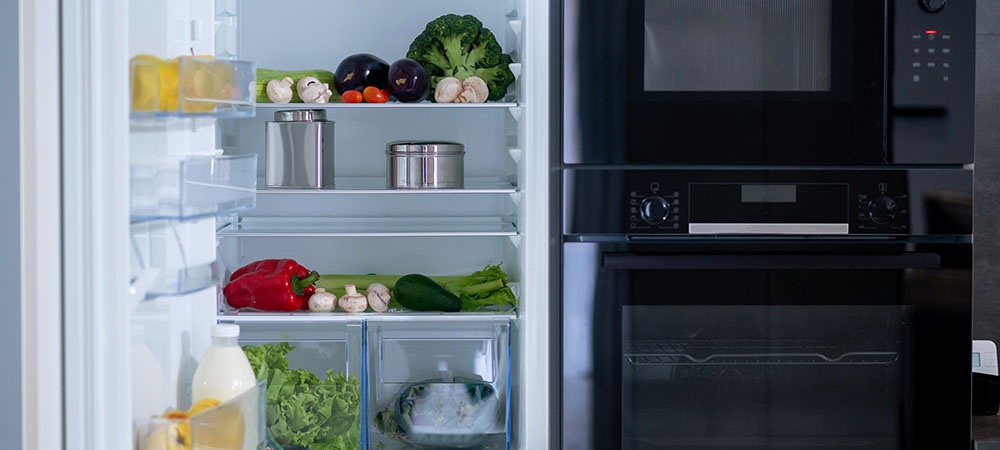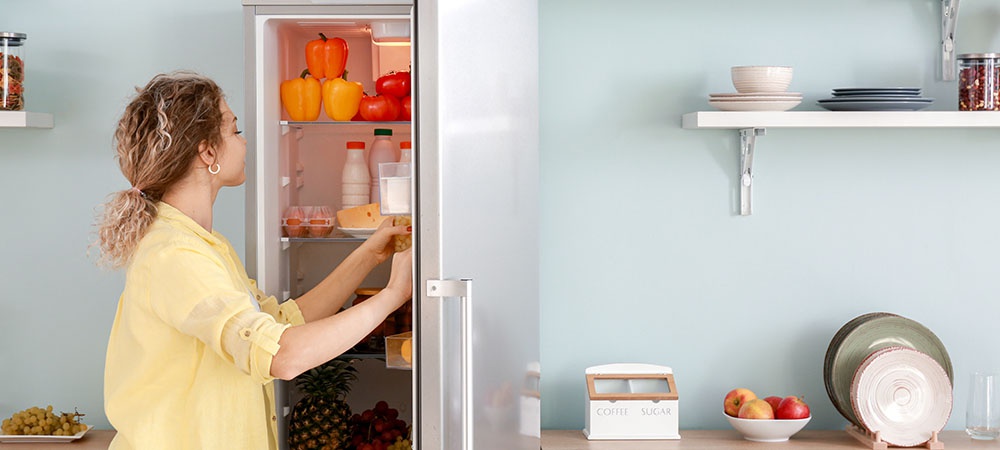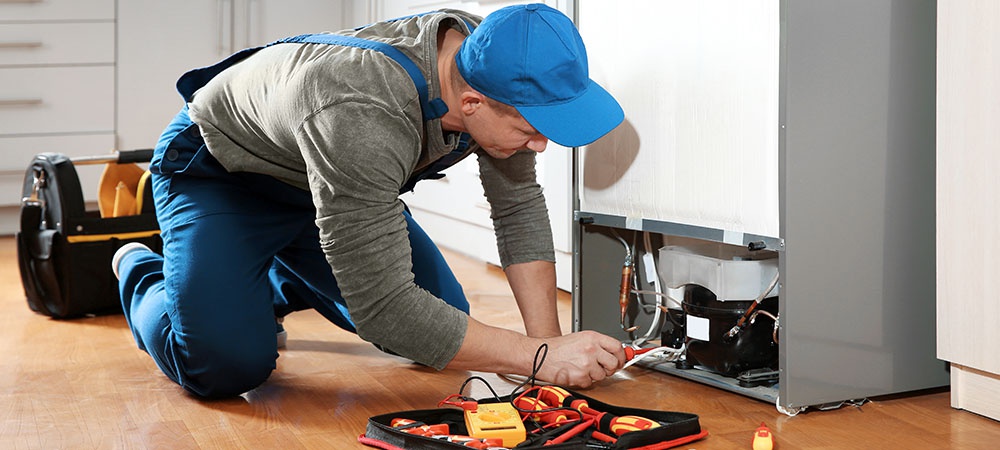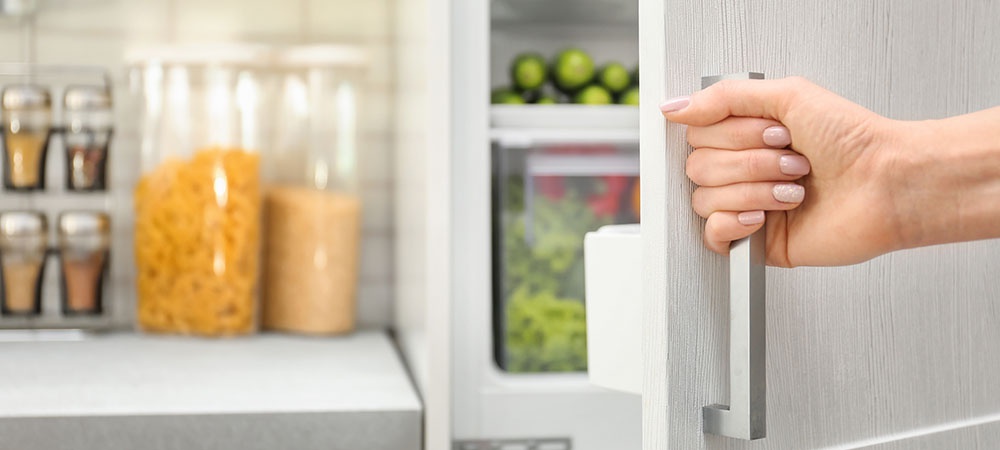You never want your refrigerator to develop problems. But, unfortunately, they sometimes do. However, you can be one step ahead with DIY methods to fix your refrigerator at home.
You’re likely thinking, how do I undertake DIY refrigerator repair without being able to tell my fridge problem. Don’t worry. We understand how much you need your refrigerator to function too.
This article will highlight the most likely problems your refrigerator can develop. Then we’ll explain how to diagnose them. Additionally, we’ll provide the best way to fix each refrigerator problem at home.
The super part is you don’t need prior knowledge of electronics to repair your faulty refrigerator. So let’s get into it!
Common Problems: How To Fix Refrigerator Faults at Home
Your refrigerator can develop faults without provocation. But some of your actions can lead to its malfunction or non-functionality.
Here are some things you may do to make your refrigerator develop faults:
- Incessant opening of the refrigerator door.
- You don’t check your condenser coils for clogs.
- You don’t close your refrigerator door properly.
- You set the cold control too cold
- You block airflow with an item in the refrigerator.
You may have unknowingly been doing the above. Or maybe you haven’t. Regardless, the following are problems your refrigerator can develop and how to fix them.
1. Refrigerator Keeps Running
Your refrigerator won’t stop running if it’s not getting the cooling job done. But you can fix this refrigerator problem at home.
How to Fix
There are particular lights a refrigerator has that indicate it’s running. Likewise, you hear a sound when it’s actively running. After a while, the sound is meant to stop, and the lights should switch too.
The above certifies that your refrigerator has a problem if it keeps running and the running lights don’t go off.
Firstly, check if there’s no airway blockage between the freezer and refrigerator sections. For instance, a food box or container could be standing in the way of air circulation in the fridge. Such a block will keep the refrigerator running as it tries to attain the set temperature.
Also, your fridge can keep running without pause if its refrigerant is low. And a refrigerator with low refrigerant can’t reach a set cold temperature. So you may need a refrigerator repair technician to test for a refrigerant boost.
Similarly, a malfunctioning refrigerator component can cause your refrigerator to keep running. Such elements are usually in the automatic defrosting system. They include a defrost timer, defrost heater, or defrost terminator.
You can follow the steps below to fix your refrigerator at home for this issue.
Step 1
Verify properly if the refrigerator compartment is cooling. Then check for frost, especially if your refrigerator is frost-free. There’s a likelihood you discover frost despite setting the cold control low.
If you see frost, the refrigerator likely has a full refrigerant level. However, the thermostat has issues.
Step 2
Endeavour to switch the cold control up and down to see if the compressor will go silent. The cold control may be bad if the compressor doesn’t shut off.
In addition, you can also check the defrost timer and heaters to ascertain their conditions.
Step 3
The condenser coils are behind the kick plate. They emit refrigerator heat into the room through a fan. If they’re filthy, the refrigerator is likely to keep running.
Step 4
Ensure the drain tube doesn’t have debris clogging it. You’ll find the drain tube just beneath the evaporator coils. The drain tube passes water into the pan when the refrigerator defrosts.
Step 5
Your refrigerator may have clogs in its coils. Additionally, the humidity may have the support of frost. And this combination can cause excessive moisture.
You may want to defrost fast. And putting off your fridge to wait days for the frosty clog to dissolve won’t help. Therefore, you can improvise by using a hairdryer to defrost the cooling coils if you can access both.
You need to exercise extra caution, especially if you’re trying to defrost your coils with a hairdryer. The former is a water source and has the potential to cause lethal electrocution if it comes in significant contact with the latter’s heat emitter.
Reach out to a refrigerator repairer if you try to fix your refrigerator at home, and it doesn’t work.
2. Refrigerator Too Cold or Not Cold
There are temperatures peculiar to fridges. For example, refrigerator compartments shouldn’t exceed 40°F. On the other hand, the freezer box should be between 0-5 °F.
Therefore, your refrigerator compartment shouldn’t freeze its contents. But there’s a problem if it freezes even with its cold control in its lowest setting. And the problem may be a bad cold control or a malfunctioning temperature sensor.
You may need to replace the temperature sensor or cold control to get your refrigerator to cool normally.
Meanwhile, below are steps to fix your refrigerator at home when it’s not cold enough.
Step 1
You first need to check the cold control. First, ensure it’s correctly set to “cold.” Next, use a refrigerator thermometer to measure the temperature of the fridge.
Step 2
The second step in this DIY refrigerator repair method is to listen for the freezer fan. The cold control and defrost timer are likely set to COOL if you can hear the fan running. If the fan isn’t working, you may need to change its motor.
Step 3
The above step may not work as you try fixing a refrigerator yourself. Therefore, you can try this third one.
You’ll need to listen to if the compressor fan is working here. The compressor is just beneath/behind the refrigerator. Usually, the freezer and compressor fans should work simultaneously.
Therefore, the fridge won’t cool well if the compressor fan isn’t working. So you may need to replace the fan.
Kindly enlist a refrigerator repairer if you try to fix your refrigerator at home to no avail.
Related Article: Top Reasons Why Your Refrigerator Isn’t Cool
3. Refrigerator Not Working at All
Sometimes your refrigerator isn’t malfunctioning. It actually stops working. The lights are off, and the motor isn’t igniting. Here are steps you can take to fix your refrigerator at home:
Step 1
The first place to check is its power area. Next, you need to ensure the refrigerator’s proper connection to electrical power.
Once you’re sure of its proper insertion, you need to check if the power socket is working. Again, you can use a power tester for this test.
You’ll need to check for a broken fuse or defective circuit breaker. Again, you may need a technician for these actions.
Step 2
Ensure the cold control is well set.
Step 3
Is your refrigerator not working after ensuring its proper connection to working power? And you’re sure the cold switch is well set? At this point, you may need the intervention of refrigerator repair services.
Therefore, properly close the refrigerator door to retain the bit of coldness. And call a refrigerator repair person.
4. Fridge Leaks, Smells, or Rattles
At times, your fridge is cooling well. But it may be producing unpleasant smells and sounds and probably leaking.
Smelling
Sometimes your refrigerator starts emitting unpleasant odours. And such bad smells may remain even after you remove all food items that are the potential reason.
You can fix this refrigerator issue. First, you need to unplug the refrigerator from the power source. Next, remove shelves and drawers and wash them intensively with water and soap.
Also, scrub the refrigerator inner with baking soda solution. The solution should be half a cup of baking soda in lukewarm water.
Next, ensure to clean the drip tray if your refrigerator has one. The pan-like material is usually beneath the fridge. And it can get smelly if it becomes funky or mouldy.
After the above steps, there’s a possibility the smell lingers. At this point, you can place charcoal briquettes in bowls and position them on the refrigerator shelves. These coals can absorb the lingering smell.
Rattling
There are specific places to check when there’s a rattling sound in your refrigerator. The vibrating sounds can come from condenser coils, compressor tubes, rollers, or stand imbalance.
Usually, the rattling noises from the first two parts are due to the looseness of the parts. Therefore, check each of them and tighten them using a screwdriver or wrench.
The compressor tubes and condenser coils may not be the cause for the rattling sounds. Therefore, check the rollers or stand for imbalance. You can do this by first removing the trim by lifting it from its aids.
Next, remove the bottom trim piece by lifting it off its supports. Then, check the feet and front to ascertain the feet/rollers are properly bearing refrigerator weight. They need to be on the ground squarely.
Leakages
A leakage underneath a refrigerator is usually a result of a condensation tube not draining correctly into a pan. You may need to check the freezer drain to ensure it’s not cloggy.
Contact a refrigerator repair person if you don’t pull through trying to fix your refrigerator at home.
5. Fridge Door Does Not Close or Seal
Cam/Hinges
Your refrigerator won’t work well if it doesn’t close or properly close. The cam is popularly known as hinges. You’ll find it at the bottom of the refrigerator door.
The cam is a circular pin that inserts into a round hole. To make it swing close, you can lubricate it with a bit of WD-40. But you may eventually need to replace it as this is a temporary solution.
Gaskets
Another reason your refrigerator may not close is if the gaskets are slack or worn. The gaskets are the rubber-like linings around the refrigerator door’s perimeter.
The gaskets need to seal properly to ensure your refrigerator closes. Or else there’ll be a waste of cold air and infiltration of moist air.
You may be able to adjust the gaskets to ensure your fridge door closes. But in some instances, that won’t solve the issue.
The next line of action then has to be a replacement of the gaskets. But, again, you can easily buy new gaskets from a local appliance repair shop or online. And this replacement is a refrigerator fix you can do at home.
The following are steps to replacing a refrigerator door gasket:
Step 1
Remove possible coverings over the hinges. You may have to loosen the top hinges of your refrigerator door if your refrigerator is a side-by-side model. You can carry out the loose with a nut driver.
Meanwhile, your fridge can be the model with its freezer on top. Here, simply adjust the freezer door top hinge using a nut driver. Then loosen the bottom hinge using a wrench.
Step 2
Place a level on the refrigerator door. Then ensure the door is level by moving it around. Afterwards, stabilize the door, affix the screws, and tighten them. Finally, return any coverings, if any.
Step 3
Now test the door seal. It should be okay now. But if it still appears defective, remove the gaskets. Next, around the top and pathway down the door’s perimeter, unfasten the screws that hold the strip. Then remove the gasket in this area.
Step 4
Here, you’ll affix a new gasket. Make this application by first slipping it below the metal holding strip. Then finally and gently tighten the screws.
Step 5
Revisit steps 3 and 4 to attend to the door’s bottom part. Afterward, tightly fasten all the screws with the new gasket now well in place.
6. Refrigerator Light Stays On
Another problem your refrigerator can experience is its lights not going off after door closure. But don’t fret. You can fix your refrigerator at home if you experience this problem.
You’re likely thinking, how is it even possible to know your refrigerator light isn’t going off after door closure. Unfortunately, it’s impossible to see through the majority of refrigerators. But there’s a way to know.
You’ll see if the light goes off or stays on when the refrigerator door is inches away from closing. You can also tell by gently feeling the bulb temperature when you open the fridge. It’ll be a bit warm or hot if it’s working while the door is closed.
To solve this, first test the functionality of the refrigerator door’s light switch. Press it in, and the lights should go off. If the lights don’t, you may need to replace the switch or check the connection.
Related Article: 10 Common Refrigerator Repair Problems
Summary
Refrigerators are one of the most reliable appliances in the home but can sometimes develop faults. However, you’re a step ahead if you know how to fix common refrigerator problems at home.
Sometimes, DIY repair may not be your best way to fix a refrigerator at home. This assertion isn’t because the methods can’t fix a broken refrigerator. Instead, it may just be that fixing a refrigerator yourself is proving difficult or stressful.
Fortunately, we have the best refrigerator repair technicians on board. And through them, we at Prime Appliance Repair can provide top refrigerator repair services.
Call us today to enlist our same-day refrigerator services today.





